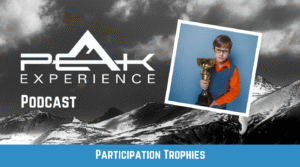In today’s fast-paced and competitive business environment, the success of an organization hinges significantly on the strength and cohesion of its team. Effective teamwork drives productivity, fosters innovation, and cultivates a positive workplace culture. However, building a high-performing team doesn’t happen by chance; it requires intentional effort and strategic activities that promote collaboration, trust, and motivation.
One of the most impactful ways to enhance team dynamics is through team-building activities. When done correctly, these activities can break down barriers, improve communication, and boost morale—all essential for achieving better results. In this comprehensive guide, we’ll explore team-building activities that work, how to engage your team effectively, and the tangible benefits these activities bring to your organization.
Why Are Team Building Activities Important?
Before diving into specific activities, it’s vital to understand why team building is a critical investment for any organization.
Enhances Communication Skills: Many team problems stem from poor communication. Activities that encourage open dialogue help team members understand each other better and express ideas more clearly.
Builds Trust and Relationships: Trust is the foundation of effective teamwork. Activities that require collaboration foster mutual respect and confidence among team members.
Boosts Morale and Engagement: Fun and meaningful activities increase employee satisfaction and engagement, reducing turnover and increasing loyalty.
Identifies Leadership and Strengths: Team activities can reveal hidden talents and leadership qualities, helping managers assign roles more effectively.
Encourages Creativity and Problem-Solving: Interactive tasks stimulate innovative thinking and strategic problem-solving, which can be transferred to daily work challenges.
Characteristics of Effective Team Building Activities
Not all activities are created equal. To maximize their impact, team-building exercises should possess specific characteristics:
- Purposeful: Aligned with team goals and organizational values.
- Inclusive: Suitable for all team members, regardless of physical ability or personality type.
- Engaging: Fun and interactive to keep participants motivated.
- Challenging but Achievable: Pushes boundaries without causing frustration.
- Reflective: Allows for debriefing to discuss lessons learned.
Top Team Building Activities That Work
Some proven team-building activities foster engagement, improve collaboration, and deliver measurable results.
1. Escape Room Challenges
Overview: Participants work together to solve puzzles and riddles to “escape” from a themed room within a set time.
Why It Works: Promotes problem-solving, communication, and teamwork under pressure. It also encourages creative thinking and quick decision-making.
Implementation Tips:
- Choose a reputable escape room provider or set up a virtual escape scenario.
- Debrief afterward to discuss strategies and lessons learned.
- Suitable for teams of 4-10 members.
2. Volunteer Together
Overview: Organize a volunteer day where team members participate in community service projects.
Why It Works: Builds camaraderie through shared purpose and social responsibility. It also enhances team empathy and collective achievement.
Implementation Tips:
- Select causes aligned with company values.
- Allocate sufficient time for meaningful engagement.
- Capture photos and stories to celebrate the effort.
3. Problem-Solving Workshops
Overview: Present teams with real or simulated business challenges to solve collaboratively.
Why It Works: Encourages strategic thinking, innovation, and collective decision-making.
Implementation Tips:
- Use case studies relevant to your industry.
- Encourage diverse perspectives.
- Follow up with a presentation of solutions and feedback.
4. Outdoor Adventure Activities
Overview: Activities like ropes courses, hiking, or team sports.
Why It Works: Builds trust and resilience while promoting physical health and well-being.
Implementation Tips:
- Ensure activities are suitable for all fitness levels.
- Focus on fun and camaraderie rather than competition.
- Consider safety precautions and professional facilitators.
5. Workplace Trivia and Games
Overview: Organize quiz sessions or game-based competitions related to company history, industry facts, or fun categories.
Why It Works: Fosters learning and engagement in a relaxed environment.
Implementation Tips:
- Use interactive platforms like Kahoot or Quizizz.
- Incorporate prizes to motivate participation.
- Mix in team-based and individual challenges.
Virtual Team Building Activities
With remote work becoming more prevalent, virtual team building has gained prominence. Here are practical online activities:
1. Virtual Coffee Breaks
Create informal virtual chats where team members can share personal stories or hobbies, fostering connections beyond work.
2. Online Escape Rooms
Many providers now offer virtual escape experiences that require teamwork and problem-solving from home.
3. Show and Tell
Team members share something personal or meaningful via video calls, promoting empathy and understanding.
4. Remote Trivia Games
Host regular trivia sessions with themes related to pop culture, industry, or fun facts.
5. Digital Scavenger Hunts
Create lists of items or tasks for team members to find or complete within their homes, encouraging movement and creativity.
Tips for Successful Team Building
To ensure your team-building activities are practical, keep these best practices in mind:
Set Clear Objectives: Define what you want to achieve—improved communication, trust, or creativity—and tailor activities accordingly.
Get Employee Input: Ask team members for their preferences to increase engagement and buy-in.
Make It Regular: Incorporate team building into your routine, not just as a one-time event.
Mix Activities: Use a variety of activities to appeal to different personalities and learning styles.
Debrief and Reflect: Discuss what was learned and how to apply insights to work.
Measure Impact: Gather feedback and track team performance to evaluate the effectiveness of activities.
The Benefits of Investing in Team Building Activities
Organizations that prioritize effective team building see numerous benefits:
- Increased Productivity: Engaged and cohesive teams work more efficiently.
- Enhanced Innovation: Collaborative environments foster new ideas.
- Lower Turnover: Employees feel valued and connected.
- Better Conflict Resolution: Open communication reduces misunderstandings.
- Stronger Organizational Culture: Shared experiences promote loyalty and pride.
Conclusion
Building a strong, engaged team is an ongoing process that requires intentional effort and the right activities. By incorporating well-designed team-building exercises, in-person or virtual, you can cultivate trust, improve communication, and foster a collaborative environment that drives better results.
Remember, the key to success lies in choosing activities aligned with your team’s unique needs, encouraging participation, and reflecting on lessons learned. When executed thoughtfully, team-building activities are not just fun breaks from routine—they are strategic investments that propel your organization toward sustained success.
Ready to boost your team’s performance? Start planning your next team-building activity today and witness the transformation in your team’s dynamics and results!




